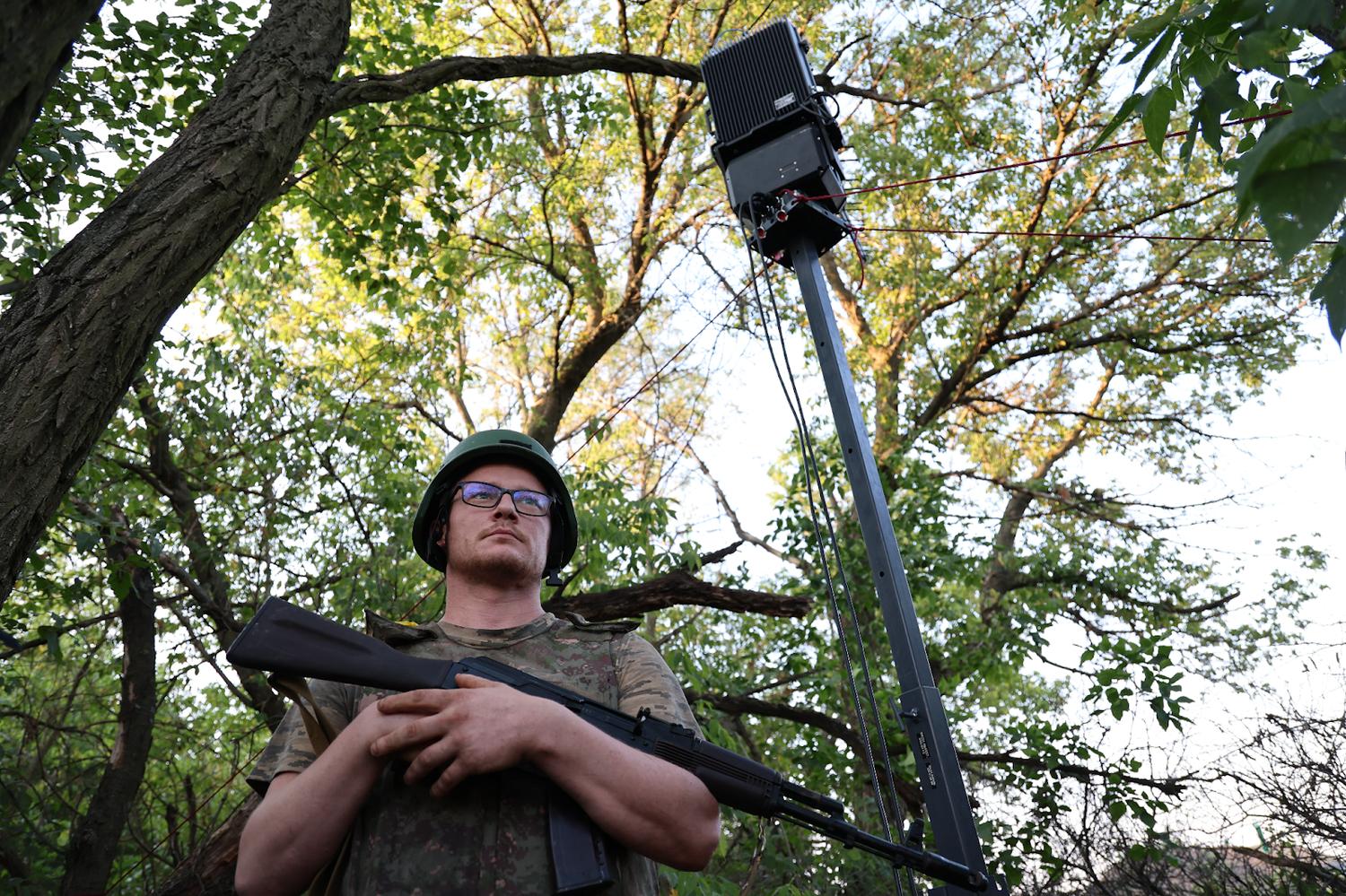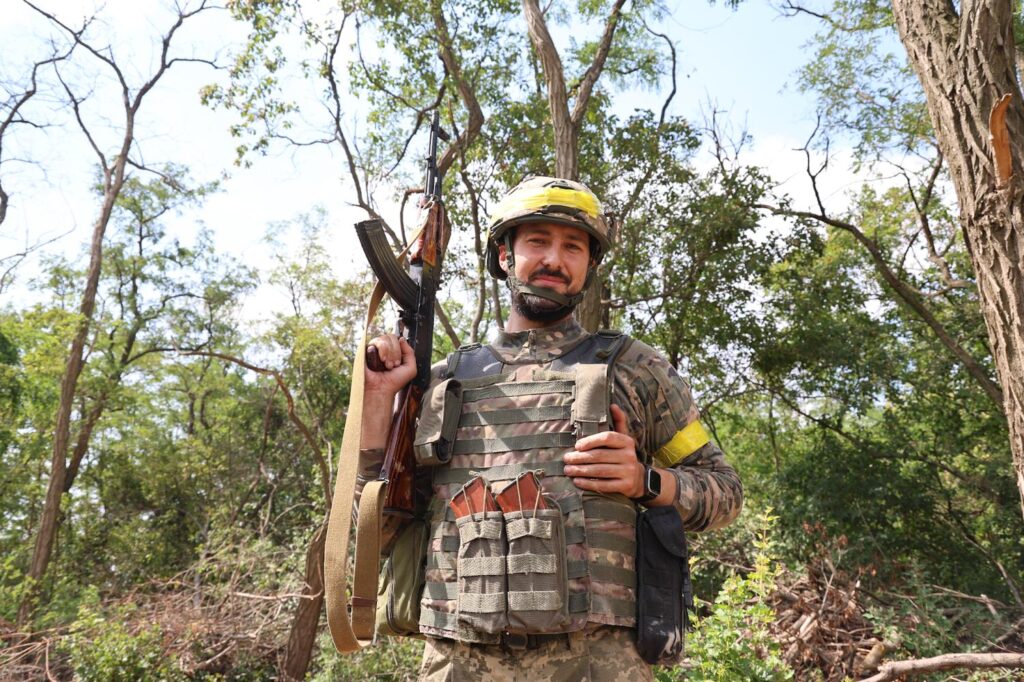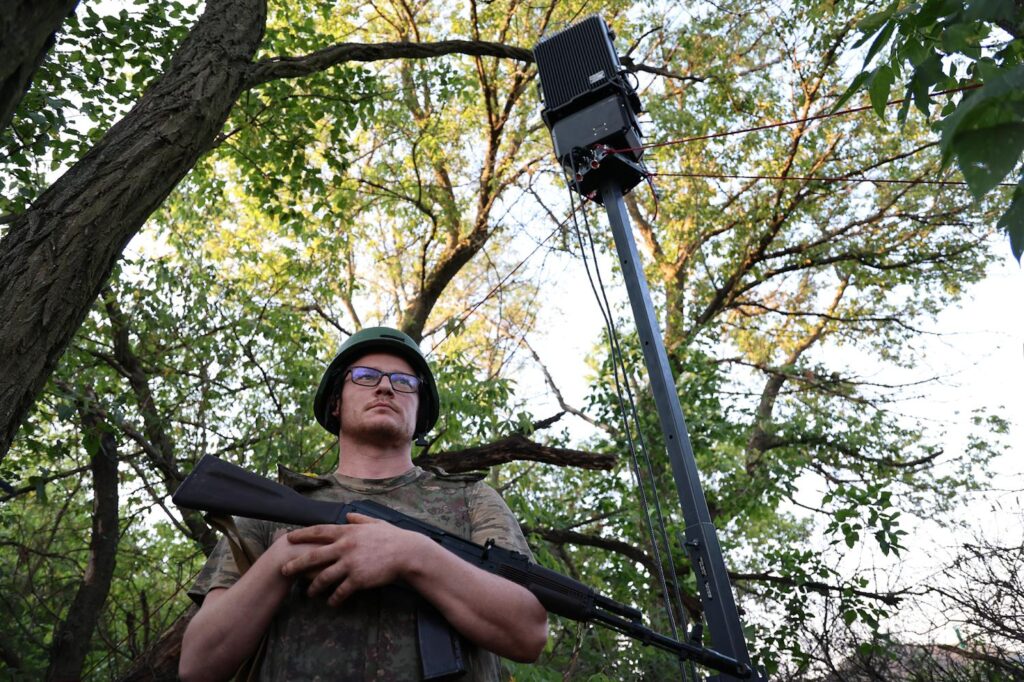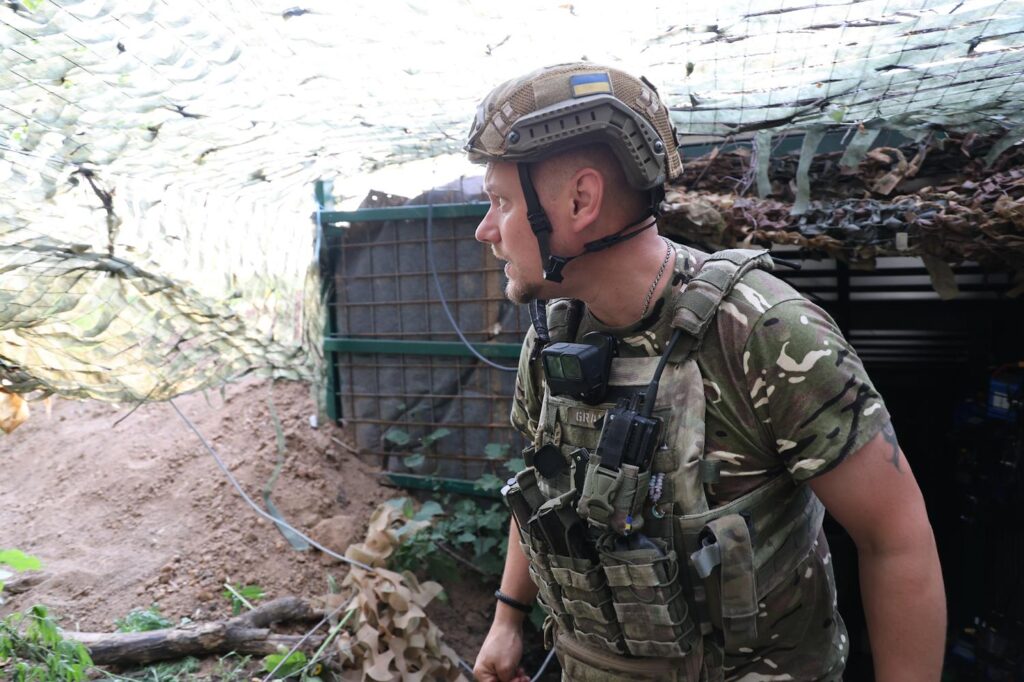Ukraine builds an army where robots die so soldiers don’t have to
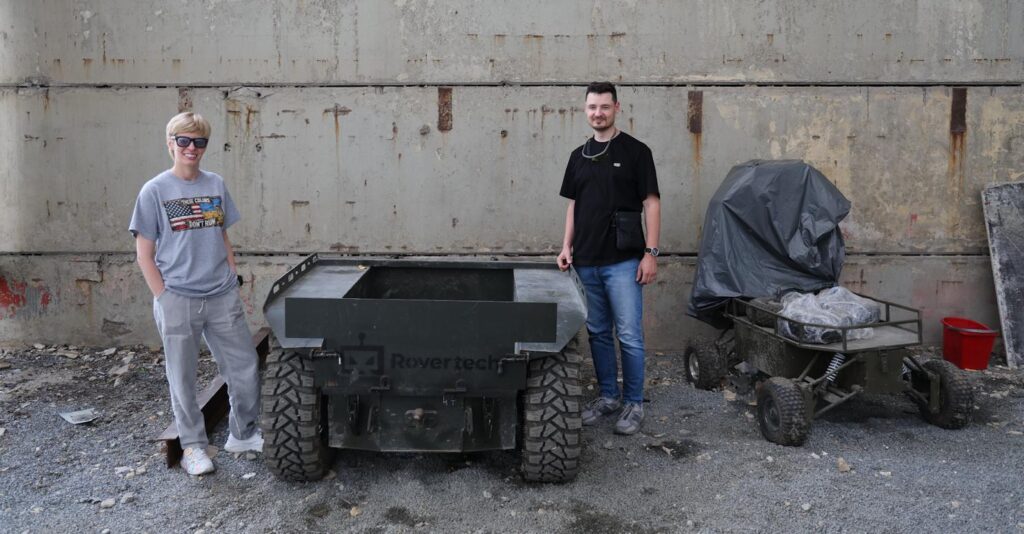
The math is brutal: Russia has three times Ukraine’s population and pays soldiers twice as much. Moscow can afford to send wave after wave of troops to die on Ukrainian soil. Ukraine cannot match those numbers.
So Ukraine is building something else entirely—an army where robots handle the dying.
When Russia launched its full-scale invasion in February 2022, Ukrainians across the globe mobilized to defend their homeland. Some picked up weapons, while others contributed with their technical abilities.
Now well in the fourth year of the war, Ukraine’s resilience endures, thanks in large part to its volunteers and tech pioneers racing to out-innovate Russia on the battlefield.
Among them is Lyuba Shipovich, a software engineer and tech entrepreneur who had been running a tech company in New York City. She left the United States and returned to Ukraine in the beginning of the full-scale invasion to join the resistance.
By 2023, she founded Dignitas, a nonprofit dedicated to training soldiers and integrating cutting-edge technologies into Ukraine’s military operations.
“We’re different from traditional charities as we don’t just fundraise and donate gear,” Shipovich said. “We build and test solutions, prove their value, and then advocate for government adoption.”
Why robots matter more than rockets
After nearly three years of grinding warfare, Ukraine faces a stark mathematical reality. Russia’s oil and gas revenues let it offer higher pay to attract new recruits, giving Moscow a significant advantage in replenishing its ranks. Ukraine must turn to technology—as it’s done throughout the war.
But bringing battlefield robots to the front isn’t simple. Resistance remains, particularly among Soviet-trained officers who often struggle to understand or trust these new capabilities.
This is where Shipovich plays an important role. Every month, she travels to brigades across the front, listening to commanders, identifying their pain points, and finding ways to support the deployment of ground robots. Dignitas helps train the army on how to use these technologies, such as ground robots.
“We train the military on tech, provide them with tech, and push for systemic adoption of battlefield innovation,” Shipovich explained.
Dignitas has already spearheaded major initiatives like Victory Drones, which is led by Maria Berlinska, and has helped drone operators scale across Ukraine’s army.
Now, Shipovich is turning her focus to ground robotics—working to ensure Ukraine’s military can rapidly adopt and deploy unmanned ground systems (UGVs) across the frontlines.
Their latest initiative is Victory Robots.
In a June social media post, the project team wrote that Dignitas Ukraine is “building a tech-driven advantage for Ukraine’s defenders” and that “it’s all about giving Ukraine every possible advantage to win—while protecting lives and reducing human losses.”
Ground robots already saving lives
Last month, I had the opportunity to join Shipovich and Stepan Nehoda from Dignitas visiting brigades working on robotics across various fronts. At each base we visited, every commander was eager to speak with her.
“The people we work with love us. Some officers hate us because we push them to do more work,” she said.
I was told that Shipovich can influence the General Staff of the Ukrainian Army and plays a role in shaping planning and resource allocation at the highest levels.
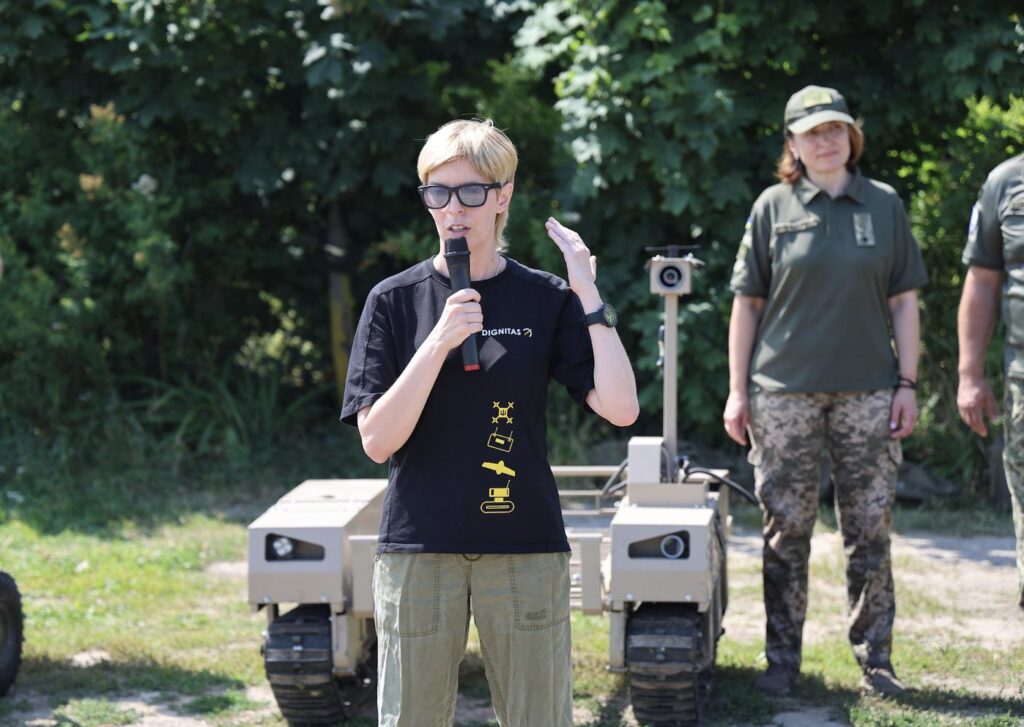
Each robotics unit was quick to show off their homemade battlefield tools and the innovations they had built in garages and workshops. I joined Lyuba on some of these visits and saw firsthand the kind of ingenuity that is helping Ukraine stay in the fight.
Some brigades are better resourced than others. But even those with very limited support are doing impressive work, hacking together solutions on a daily basis to stay operational.
Operators from the 3rd Assault Brigade told me that ground robots are now being used for medical evacuations almost every day. Other units are relying on robots to handle more of the logistical burden, delivering supplies and reducing the risks to human soldiers.
Oleksandr, the Platoon Commander of Ground Robotic Complexes (GRC) with the Antares Battalion of the Rubizh Brigade, described how volunteers are helping Ukraine adapt on the battlefield.
“Volunteers like Dignitas serve as a bridge between tech developers and the military,” he said. “They help rapidly test new solutions, adapt them to real battlefield conditions, and quickly deliver what actually works on the front lines.”
“This isn’t just humanitarian support,” he added. “It’s the real-time development of combat capabilities.”
Oleksandr, known as Ghost, has seen firsthand how ground robotic platforms are reshaping the war.
“Ground robotic platforms are already proving their effectiveness in logistics, evacuation, and fire support,” he said. “Over the next year, their role will only grow. They reduce risks for personnel, automate routine or dangerous tasks, and enhance the overall tactical flexibility of units.”
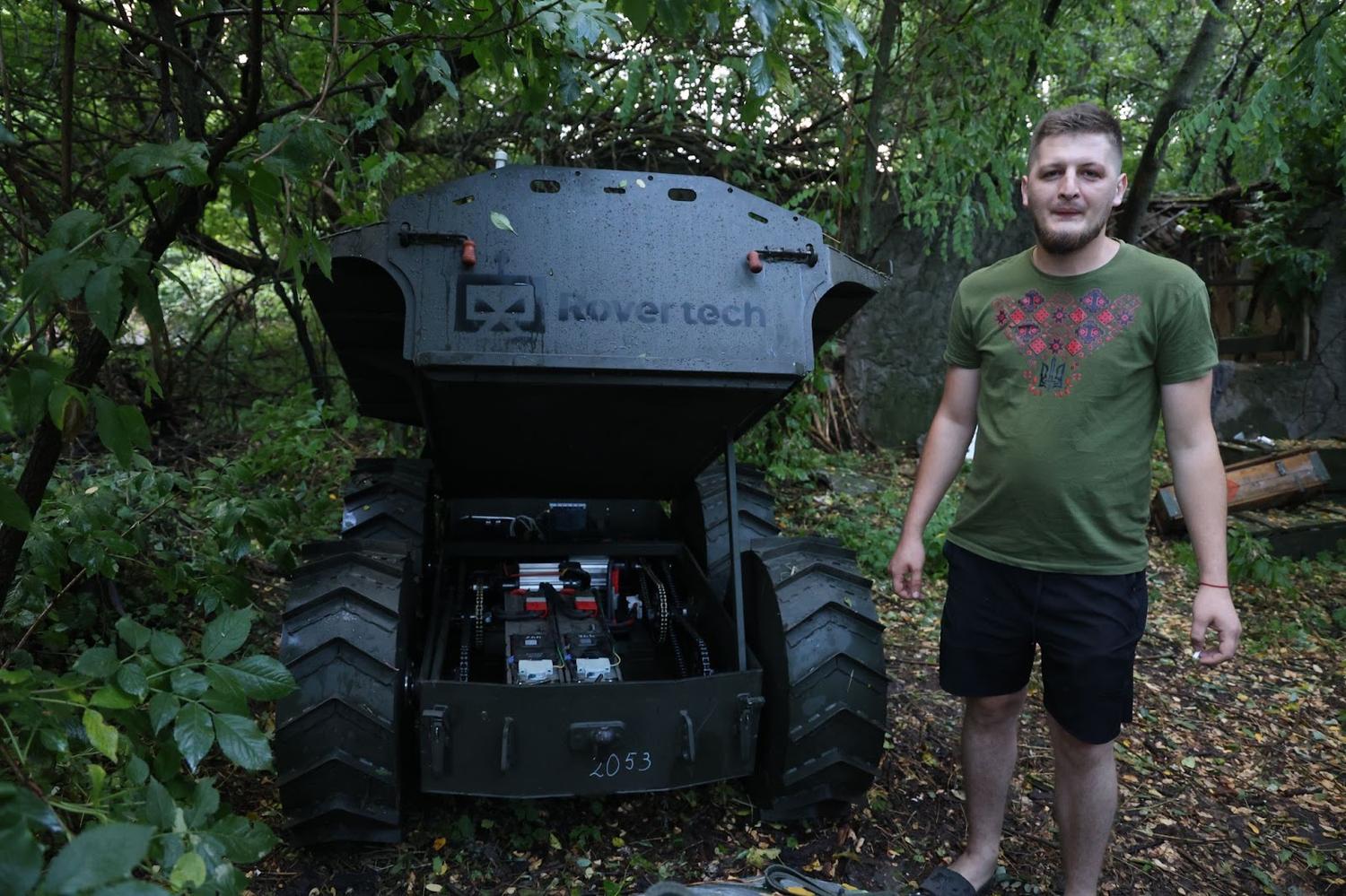
Ruslan, callsign “Light,” a UGV operator with the Bulava Battalion of Ukraine’s 72nd Mechanized Brigade, said his unit has avoided driver fatalities recently, though some have been wounded.
Before adopting robots, they lost four vehicles in May alone, with several more damaged. Losses have increased as the enemy now targets logistics deeper in the rear, focusing on FPV drone operators as higher-value targets than infantry.
Russian forces use fiber-optic FPV drones to ambush supply routes, hiding until vehicles appear.
“This is no longer science fiction,” said Oleksandr. “It’s a tool of war.”
The first robot-only assault in modern warfare
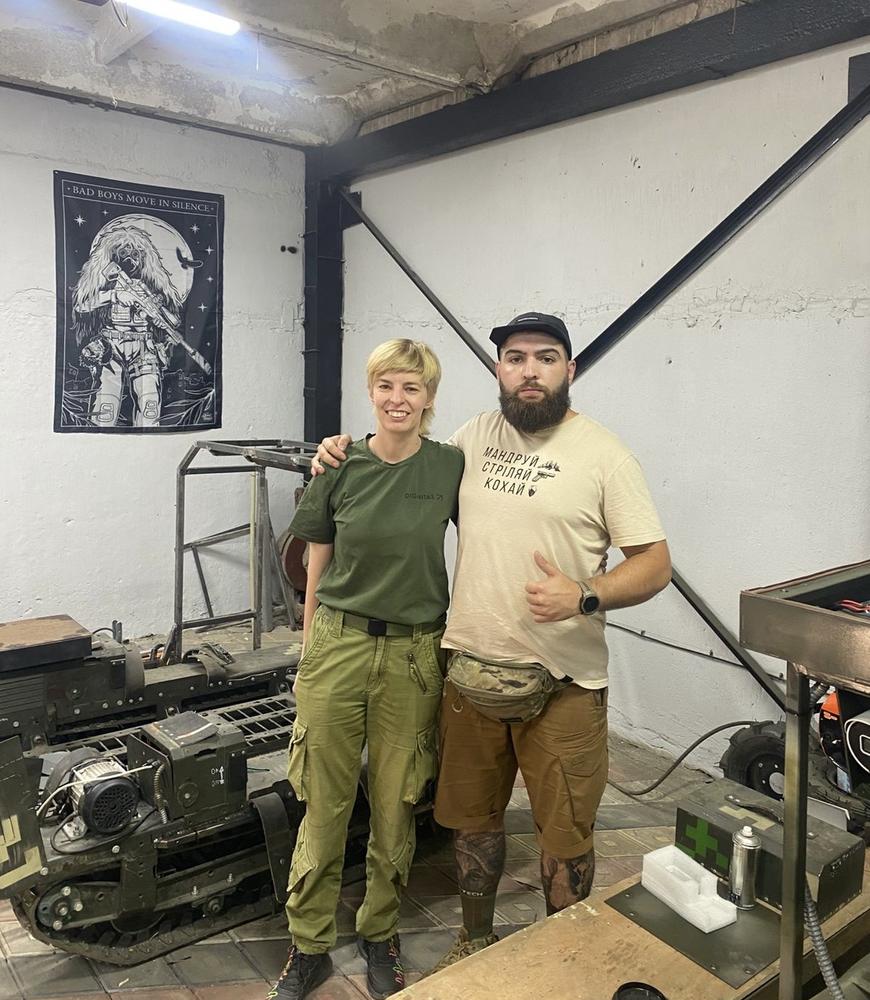
One recent operation showed just how far the technology has come. In the Kharkiv Oblast, soldiers from the 3rd Assault Brigade carried out a successful mission without a single infantryman on the ground.
Using only FPV drones and ground robots, they attacked enemy positions, destroyed fortifications, and captured Russian soldiers who surrendered to the machines.
The remaining Russian troops were directed toward Ukrainian positions by drones overhead and were then taken prisoner. “This is the first confirmed successful assault in modern warfare conducted exclusively by unmanned platforms,” the 3rd Assault Brigade noted.
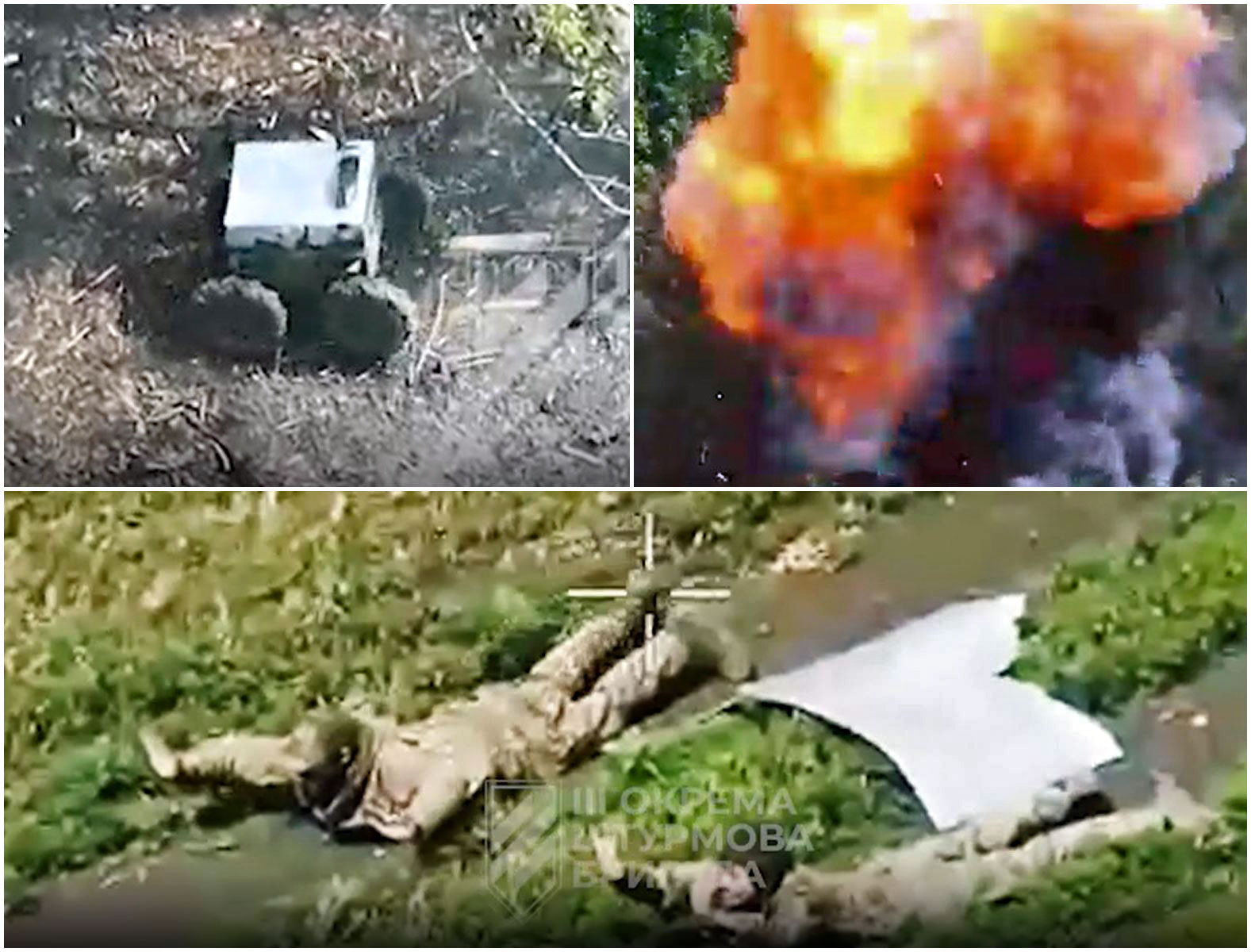
First battlefield capitulation to robots: Ukrainian drones force Russian surrender and seize fortified position (video)
At a recent demonstration of robotic systems near Kyiv, Volodymyr Rovensky, an officer in the Department for the Development of Ground Control Systems for Unmanned Systems under the Land Forces Command of the Armed Forces of Ukraine, provided a broader view. He noted that 22 combat units are already deploying ground robots.
According to Rovensky, 47% of all missions carried out by these systems involve logistics and evacuation, 25% focus on engineering tasks, 12% are combat operations, and the rest are special tasks. He emphasized that technological superiority will determine the next phase of the war.
“Our primary task,” Rovensky said, “is to provide the army with robotic complexes that can replace the infantry.”
The ultimate goal is to see ground robots deployed at scale across the entire frontline.
Building the future of warfare

Shipovich stated that “the idea that robots can fully replace infantry is both true and false. Today, they cannot, but that should be our goal.” She added, “We must get people out of the trenches and off the front line. Robots can do the dirty, dangerous work.”
“Today, 99% of ground drones in military use are Ukrainian-made,” she said.
“Other countries are studying our approach because what worked in US labs or fields is not viable in war. Ukrainian engineers are creating the future of warfare, not just for Ukraine, but for the world.”
Shipovich isn’t just focused on robots. She spends a lot of time thinking about artificial intelligence and how to apply it more widely across drones on the battlefield and to integrate into the ground robots to make them even more effective.
“Technology is everything,” she told me.
Shipovich envisions a wider technological shield that will protect Ukraine in the future, where drones and ground robots hold the frontline.
What comes after victory
When asked what she plans to do once the war is over, she replied that first, she needs to survive until it ends.
Key developments in Ukraine’s robotic warfare:
- 22 combat units now deploy ground robots regularly
- 47% of robot missions involve logistics and evacuation
- First successful robot-only assault completed in Kharkiv Oblast
- 99% of military ground drones are Ukrainian-made
- Victory Robots initiative aims for frontline-wide deployment
Oleksandr described the transformation: “This is no longer science fiction. It’s a tool of war.”


